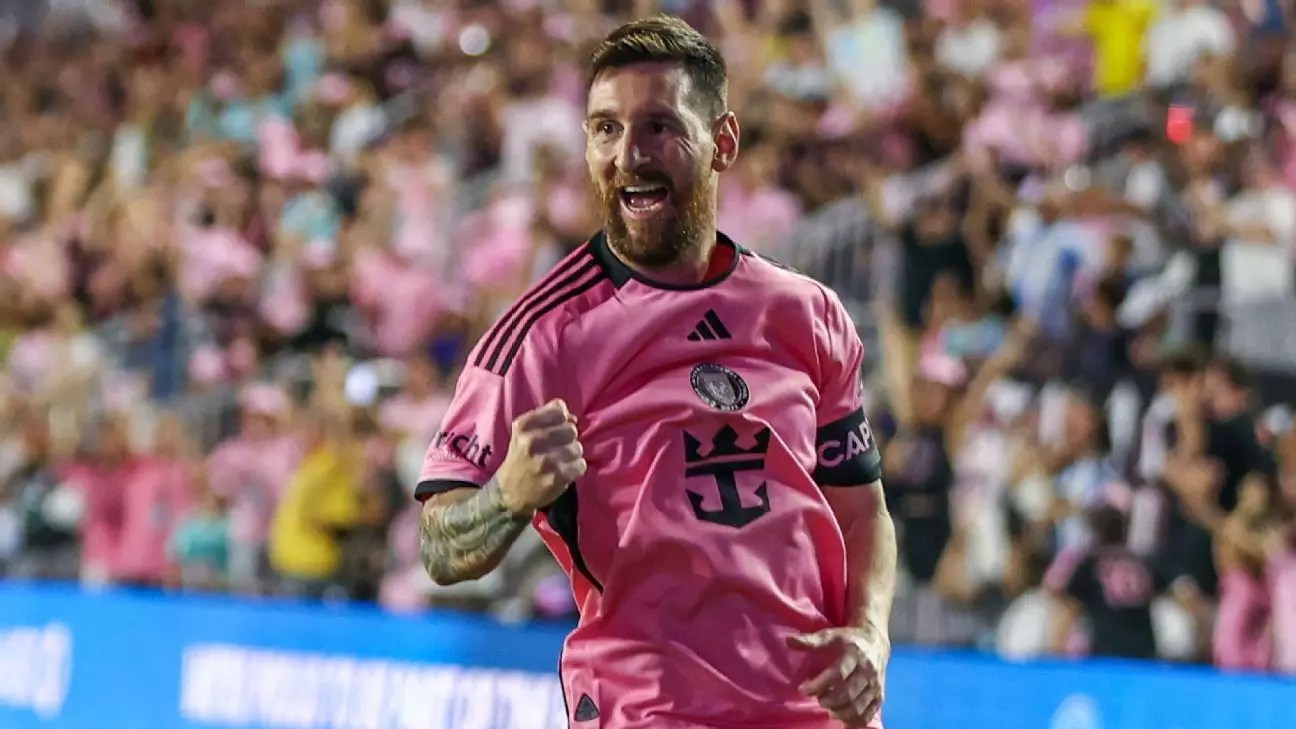The emergence of Major League Soccer (MLS) as a burgeoning, competitive platform for soccer in the United States is a narrative that continues to capture attention. As evidenced by the recent salary figures released by the MLS Players Association (MLSPA), the league isn’t just growing in popularity; it is also rapidly evolving in terms of player compensation. The average MLS salary has seen an impressive increase of 9.7%, climbing from $543,207 to $596,226. This surge signifies a substantial investment in talent and reflects the league’s ambition to elevate its status in the global football landscape.
At the crux of this financial boom is none other than soccer icon Lionel Messi. By joining Inter Miami, Messi not only boosted his new team’s aspirations but also created a ripple effect that has influenced the entire league. With guaranteed annual compensation surpassing $20.4 million, Messi’s contract alone surpasses the payrolls of several other teams, making him not only a key figure for Miami but also a significant catalyst for MLS’s financial growth.
Delving deeper into the salary structure reveals stark contrasts among teams. While Inter Miami led the charge with an astonishing payroll of $41.7 million—more than double that of 23 other MLS teams—other franchises lag significantly behind. Toronto FC, in second place, spent $31.81 million, signifying an intentional focus on attracting high-profile talent. Conversely, teams like CF Montreal, with a mere $11.43 million allocation, illustrate the vast financial gulf that exists within the league.
Even with significant investments, financial muscle doesn’t guarantee success on the field. Of the ten teams with the highest expenditures, nearly half were unable to secure a spot in the MLS Cup playoffs. This inconsistency raises questions about the correlation between spending and performance and suggests that strategy, coaching, and effective team dynamics may be just as crucial, if not more so, than the size of the payroll.
While the high-profile hires and star acquisitions steal headlines, it’s crucial to recognize the strengthening of salaries at every level. The improvements aren’t limited to the high earners; the median guaranteed base compensation has also seen a commendable rise, increasing 9.3% from $282,125 to $308,375. This upward trend signifies not only a better quality of life for the players at the lower end of the wage spectrum but also a commitment from the league to create a more equitable salary landscape.
The collective bargaining agreement established in February 2021 has also played a critical role in shaping this context. With the CBA effective until 2027, players can expect sustained financial growth, further enhancing their bargaining power. The league’s willingness to invest significantly into player salaries not only attracts talent but may also fortify the league’s reputation among fans and potential future players.
The allure of the MLS has gained international traction, with several high-profile players venturing into the league during the summer transfer window. Notable names include Lorenzo Insigne of Toronto FC, earning $15.4 million, and Sergio Busquets from Inter Miami, who commands an impressive $8.77 million. These players, alongside Messi, are elevating the profile of MLS not just among domestic fans but on global stages as well.
Additionally, the promise of footballing stars extends beyond just a select few elite players. Clubs have been actively pursuing talents from various leagues, enhancing the overall competition and quality on the pitch. The summer transfer dealings featuring players like Olivier Giroud and Marco Reus signal a trend that could become a hallmark of the league in the years to come.
MLS has reached a tipping point in its evolution, driven by the charisma and talent of international icons like Lionel Messi and supported by a growing financial commitment from various franchises. As the landscape continues to shift, MLS faces the unique challenge of balancing financial investments with on-field performance. The dramatic increase in payrolls, particularly for clubs like Inter Miami and Toronto FC, offers a glimpse into an ever-brightening future for American soccer.
The social and cultural implications of this surge in player salaries are profound. MLS is not only cultivating a competitive atmosphere but also establishing itself as a credible player in the international soccer dialogue. As this narrative unfolds, the ongoing evolution of the league will undoubtedly be fascinating to observe, as it may pave the way for even greater accomplishments in the near future. With enduring focus on equity, quality, and sustainable growth, the MLS is poised for an exhilarating journey ahead.


Leave a Reply